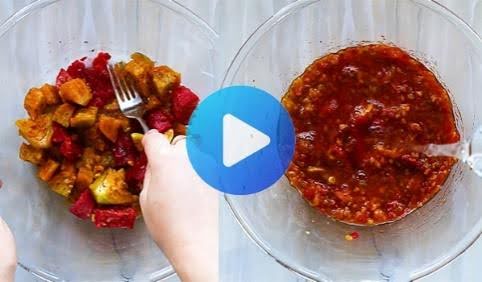When most people think about fitness, they picture weight loss. But for many women, the challenge is gain weight—and doing it in a healthy way. Whether it’s about building curves, improving strength, or addressing health concerns, gaining weight can be just as tricky as losing it. If you’re wondering how to gain weight safely, quickly, and healthily, you’re in the right place.
Let me guide you step-by-step through what works, what doesn’t, and how to craft a weight gain diet that suits your body and goals.
Why Gaining Weight Matters for Some Women
Gaining weight isn’t just about eating more food. For some, it’s about reaching a healthy weight for better energy, improved mood, or hormonal balance. If you’re underweight, you may feel tired, get sick often, or notice hair loss or brittle nails.
That’s why it’s important to gain weight the right way—through nourishing foods, strength-building exercises, and good habits.
Step 1: Understand Your Calorie Needs
To gain weight, you need to eat more calories than your body burns. But how much more? Here’s a simple way to figure it out:
- Start with your maintenance calories (the number of calories you need to stay the same weight).
- Add an extra 300 to 500 calories per day. This is called a calorie surplus.
For example, if your maintenance is 2,000 calories, aim for 2,300–2,500 calories daily.
Step 2: Build a Balanced Weight Gain Diet
Eating anything and everything might help you gain weight, but it won’t help you feel strong or healthy. Instead, focus on whole, nutrient-rich foods.
What to Include in Your Weight Gain Diet
- Protein (The Builder)
Protein is the key to building muscles and staying strong. Aim for 0.8–1 gram of protein per pound of your body weight. Here are some great protein-rich foods to try:- Eggs
- Chicken breast
- Greek yogurt
- Lentils
- Protein shakes
- Carbohydrates (The Energizer)
Carbs fuel your body and help you perform during workouts. Choose complex carbs over sugary snacks:- Brown rice
- Oatmeal
- Sweet potatoes
- Whole-grain bread
- Healthy Fats (The Helper)
Healthy fats are calorie-dense, making them perfect for weight gain. Plus, they’re good for your brain and hormones:- Avocados
- Nuts (almonds, walnuts)
- Seeds (chia, flax)
- Olive oil
- Fruits and Vegetables (The Boosters)
These provide vitamins, minerals, and fiber. They don’t add many calories but keep your body working smoothly. - High-Calorie Extras (The Finishers)
These can help you bump up your calories without eating a ton of extra food:- Peanut butter
- Full-fat dairy (milk, cheese)
- Smoothies with protein powder
Step 3: Plan Your Meals
Eating three large meals might feel overwhelming. Instead, break it into 5–6 smaller meals spread throughout the day. This way, you can eat more without feeling stuffed.
Sample Weight Gain Meal Plan
- Breakfast: Oatmeal topped with peanut butter, sliced banana, and honey
- Snack: Greek yogurt with granola and berries
- Lunch: Grilled chicken sandwich with avocado, spinach, and a side of sweet potato fries
- Afternoon Snack: A protein shake made with milk, frozen fruit, and almond butter
- Dinner: Baked salmon with quinoa and roasted vegetables
- Evening Snack: A handful of mixed nuts or cheese with whole-grain crackers
Step 4: Exercise to Build Muscle, Not Just Weight
Gaining weight doesn’t mean only eating more. Exercise helps you build lean muscle instead of just adding fat.
Focus on Strength Training
Strength training is the best way to shape your body while gaining weight. Try exercises like:
- Squats
- Deadlifts
- Push-ups
- Dumbbell curls
Aim for 3–4 days of strength training each week. Keep your weights heavy enough to challenge yourself but not so heavy that your form suffers.
Step 5: Add High-Calorie Snacks
Snacks are a great way to sneak in extra calories. Here are some easy ideas:
- Trail mix with nuts, dried fruits, and dark chocolate
- Full-fat yogurt with honey and granola
- Whole-grain toast with avocado and a fried egg
Step 6: Drink Your Calories
Sometimes it’s hard to eat more food, but you can drink your calories instead. Smoothies, milkshakes, and protein shakes are quick, easy, and tasty.
Here’s a simple recipe to try:
- 1 cup whole milk
- 1 scoop of protein powder
- 1 tablespoon almond butter
- 1 banana
- A handful of spinach (optional)
- Blend until smooth and enjoy!
Step 7: Stay Consistent and Patient
Gaining weight takes time, just like losing it. You might not see results overnight, but with consistency, you’ll get there. Track your progress weekly by stepping on the scale or measuring your body.
Things to Avoid
- Skipping Meals: You need a steady intake of calories throughout the day.
- Junk Food Diets: Processed foods might add weight, but they won’t make you feel great.
- Overdoing Cardio: Too much cardio can burn the calories you’re working hard to eat. Stick to light cardio like walking or yoga.
Listen to Your Body
Pay attention to how your body feels as you add more calories and exercise. If you feel too full, try adding calories to your snacks or drinks. If you feel tired, make sure you’re getting enough protein and carbs.
By following these steps, you can create a weight gain plan that’s safe, quick, and healthy. Your body deserves the best care, and with the right approach, you’ll feel strong, energized, and confident in no time!
Additional Tips to Optimize Your Weight Gain Journey
If you’ve followed the basic steps I outlined earlier, you’re already on the right track. But if you’re looking for even more ways to refine your strategy and achieve your goals, here’s an expanded guide with additional tips, techniques, and insights.
How to Overcome Common Challenges in Gaining Weight
Gaining weight isn’t always straightforward. Let’s tackle some of the obstacles you might face and how to address them.
“I’m Too Full to Eat More”
Feeling full can make it hard to reach your calorie goals. Here’s how to work around it:
- Choose Calorie-Dense Foods: Replace low-calorie options with high-calorie ones. For example, swap skim milk for whole milk or plain toast for toast with nut butter.
- Eat Small, Frequent Meals: Spacing out your meals makes it easier to digest and enjoy food.
- Don’t Skip Liquids: Drinking smoothies or shakes is an effortless way to add calories without feeling overly full.
“I’m Gaining Fat, Not Muscle”
If you notice unwanted fat gain, here’s what you can do:
- Reassess Your Diet: Make sure your calories are coming from whole, nutrient-dense foods. Cut back on junk food if it’s sneaking into your diet.
- Increase Strength Training: Focus on progressive overload (lifting heavier weights over time) to build lean muscle.
- Add Active Recovery Days: Light movement, like yoga or walking, can help balance your routine without burning too many calories.
“I Don’t Have the Time to Cook”
When life gets busy, it’s easy to fall off track. Simplify your meal prep with these ideas:
You Might Be Interested In: Learning more about The Complete Smoothie Detox & Weight Loss Program
- Batch Cooking: Cook in bulk to have meals ready for the week. Things like rice, chicken, and roasted veggies store well.
- Grab-and-Go Snacks: Keep portable, high-calorie snacks like protein bars or trail mix handy.
- Use Time-Saving Appliances: Tools like slow cookers, air fryers, and blenders can cut down prep time.
Advanced Nutrition Tips for Weight Gain
Once you’ve nailed the basics of a weight gain diet, you can fine-tune your eating habits for even better results.
Timing Your Meals Around Workouts
What you eat before and after workouts can make a big difference in muscle growth.
- Pre-Workout Meal: Eat a mix of protein and carbs 1–2 hours before exercising. For example, have a banana with peanut butter or a small chicken sandwich.
- Post-Workout Meal: Within 30 minutes of working out, refuel with protein and carbs to help repair muscles and replenish energy. A protein shake with fruit works perfectly.
Adding Supplements to Support Weight Gain
While food should always come first, supplements can fill in the gaps.
- Protein Powder: Great for a quick and easy protein boost, especially after workouts.
- Creatine: Helps with strength and muscle gain. Take 3–5 grams daily for best results.
- Multivitamins: Ensure you’re meeting all your nutrient needs, especially if your diet isn’t perfectly balanced.
Eating Before Bed
A bedtime snack can help your body recover and grow while you sleep. Go for something with protein and healthy fats, like a handful of almonds with Greek yogurt or a small turkey and cheese wrap.
Exercises That Complement a Weight Gain Plan
To gain weight the right way, your exercise routine is just as important as your diet. Let’s dive deeper into the best strategies for building strength and muscle.
Progressive Overload for Muscle Growth
Progressive overload means gradually increasing the difficulty of your workouts. This could mean:
- Adding more weight to your lifts
- Increasing the number of reps or sets
- Slowing down the tempo of your movements
For example, if you’re doing squats with 20 pounds, try adding 5 pounds every couple of weeks.
Best Compound Exercises
Compound exercises work multiple muscle groups at once, making them highly effective for building muscle. Include these in your routine:
- Deadlifts
- Bench presses
- Pull-ups
- Barbell rows
Don’t Forget Rest and Recovery
Your muscles grow when you rest, not during your workouts. Make sure to:
- Get 7–9 hours of sleep every night
- Take at least one rest day per week
- Stretch or do light yoga to keep your body flexible
Mindset and Motivation for Long-Term Success
Sticking to a weight gain plan takes patience and dedication. Here’s how to stay motivated:
Set Realistic Goals
Break your big goal into smaller, achievable milestones. For example:
- “I want to gain 2 pounds this month.”
- “I will lift 10 pounds heavier by the end of the next four weeks.”
Tracking your progress helps you see how far you’ve come.
Celebrate Small Wins
Every little victory counts. Hit a new personal best at the gym? Celebrate! Stuck to your calorie goals for a week? Give yourself a pat on the back.
Stay Positive
It’s easy to get discouraged if progress feels slow, but remember that every step forward is a win. Focus on how you’re feeling—stronger, more energetic, and more confident.
Foods to Avoid (or Limit) During Weight Gain
Not all calories are created equal. While it’s okay to indulge occasionally, too much junk food can leave you feeling sluggish and unwell. Here’s what to limit:
- Sugary Drinks: Soda, sweetened coffee, and energy drinks can add empty calories without providing nutrients.
- Fried Foods: These are high in unhealthy fats that don’t support muscle growth.
- Highly Processed Snacks: Chips and cookies are calorie-dense but lack the vitamins and minerals your body needs.
Instead, try making healthier versions of your favorite treats at home, like baked sweet potato fries or dark chocolate oatmeal cookies.
Listening to Your Body’s Signals
Your body is your best guide, so pay attention to what it’s telling you.
Signs You’re on the Right Track
- You feel more energetic throughout the day.
- Your workouts are improving, and you’re lifting heavier weights.
- You’re noticing gradual changes in your weight and body shape.
Signs to Adjust Your Plan
- You feel overly tired or sluggish: You might not be eating enough carbs.
- You’re bloated or uncomfortable: Check if you’re eating too much too quickly.
- You’re not gaining weight after several weeks: Increase your calorie intake slightly.
How to Keep the Momentum Going
Once you’ve hit your goal weight, the journey doesn’t stop there. Maintaining your weight and continuing to feel your best takes effort.
Transition to Maintenance Mode
When you’re ready to stop gaining, reduce your calorie intake slightly so you’re eating at maintenance. This means consuming just enough calories to stay at your current weight.
Stay Active
Keep strength training as part of your routine to maintain your muscle and strength. You might not need to work out as intensely, but staying active will help you feel great.
Keep Eating Well
Even if you’re not focused on gaining anymore, continue prioritizing nutrient-dense foods. Your body will thank you for it!
By focusing on these additional strategies, you can enhance your weight gain journey and maintain a strong, healthy body for years to come. Remember, this process is about more than just numbers on a scale—it’s about feeling your best inside and out. Keep building those habits, and don’t forget to enjoy the journey!








I really enjoyed reading this post. Thank you